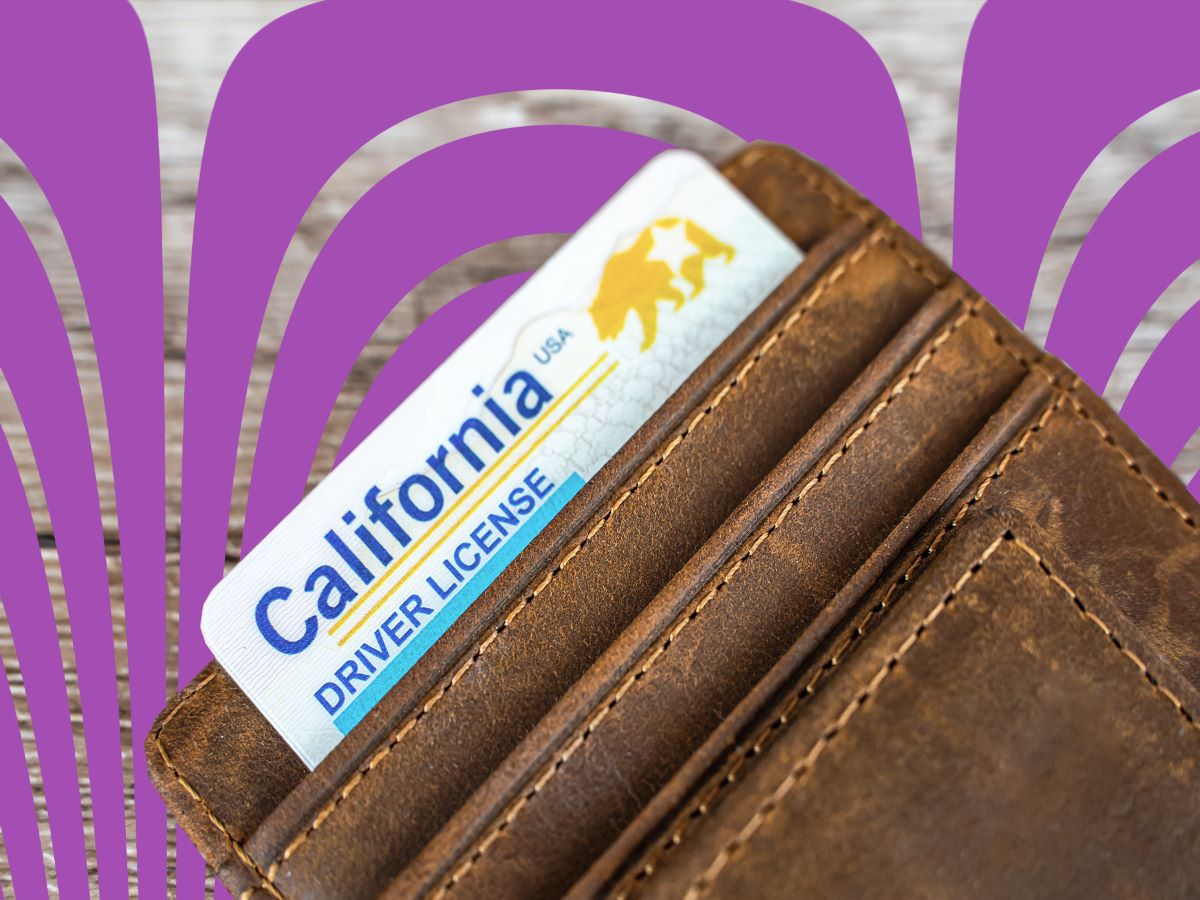Home>Finance>How Long Do You Have To Add A New Driver To Your Insurance Policy


Finance
How Long Do You Have To Add A New Driver To Your Insurance Policy
Published: November 20, 2023
Looking for finance tips on adding a new driver to your insurance policy? Find out how long you have to make this important update and stay financially protected.
(Many of the links in this article redirect to a specific reviewed product. Your purchase of these products through affiliate links helps to generate commission for LiveWell, at no extra cost. Learn more)
Table of Contents
- Introduction
- Understanding the Importance of Adding a New Driver to Your Insurance Policy
- Factors to Consider When Adding a New Driver to Your Insurance Policy
- Timelines and Deadlines for Adding a New Driver to Your Insurance Policy
- Consequences of Failing to Add a New Driver to Your Insurance Policy
- Steps to Add a New Driver to Your Insurance Policy
- Common Questions and Answers Regarding Adding a New Driver to Your Insurance Policy
- Conclusion
Introduction
Adding a new driver to your insurance policy is an important step to ensure that you and your loved ones are adequately protected on the road. Whether you’re a new parent, a newly licensed teenager, or a family member who recently obtained their driver’s license, it’s crucial to update your insurance policy to reflect these changes. Failure to do so can have serious repercussions in the event of an accident or incident.
Insurance policies are designed to provide financial protection in the event of an accident, damage, or loss. Adding a new driver to your policy allows the insurance company to assess the risk associated with the additional driver and adjust your rates accordingly. This ensures that you have the appropriate coverage and that your policy accurately reflects the individuals who will be operating your vehicles.
In this comprehensive guide, we’ll delve into the importance of adding a new driver to your insurance policy, factors to consider, timelines and deadlines, consequences of failing to update your policy, and the necessary steps to add a new driver. We’ll also address some common questions and provide clarity on the process. By the end of this article, you’ll have a clear understanding of why it’s essential to take action promptly and ensure that your insurance policy is up to date.
Understanding the Importance of Adding a New Driver to Your Insurance Policy
When it comes to insurance, accuracy and transparency are key. Adding a new driver to your insurance policy is essential to maintain the integrity of your coverage and protect yourself financially in case of an accident. Here are a few reasons why it’s important to take this step:
- Compliance with the Law: Different states and jurisdictions have specific laws and regulations pertaining to insurance coverage for drivers. Failing to add a new driver to your policy could result in legal consequences and fines. By ensuring the inclusion of all licensed drivers in your household on your insurance policy, you remain compliant with the law.
- Proper Assessment of Risk: Insurance companies use various factors to assess the risk associated with covering a driver. These factors can include age, driving experience, and accident history. By adding a new driver to your policy, the insurance company can accurately assess the additional risk and adjust your rates accordingly. Failing to disclose the presence of a new driver can lead to denied claims or even non-renewal of your policy.
- Protection of Assets: Accidents happen, and when they do, they can result in property damage, injuries, or even fatalities. By adding a new driver to your insurance policy, you ensure that adequate coverage is in place to protect your assets. Without proper coverage, you could be held personally liable for any damages or injuries caused by the new driver.
- Prioritizing Safety: Including new drivers on your insurance policy is not just a matter of legalities and finances; it’s also about promoting safety on the road. By extending coverage to new drivers, you encourage responsible driving behaviors and ensure that they have the protection they need in case of an accident.
- Peace of Mind: Knowing that you have followed the proper procedures and added new drivers to your insurance policy provides peace of mind. You can drive knowing that you are operating within the law and that you have the necessary coverage in place. This sense of security is invaluable when it comes to protecting yourself, your loved ones, and your financial stability.
In summary, adding a new driver to your insurance policy is not just a formality. It is a critical step in maintaining compliance, properly assessing risk, protecting your assets, promoting safety, and providing peace of mind. By taking this step, you ensure that your insurance coverage accurately reflects those who will be driving your vehicles, allowing for the appropriate adjustments to be made to your rates and coverage.
Factors to Consider When Adding a New Driver to Your Insurance Policy
Adding a new driver to your insurance policy involves more than just updating your paperwork. It requires careful assessment of several factors that can impact your insurance coverage and rates. Here are some important considerations when adding a new driver:
- Age and Driving Experience: Insurance companies often consider the age and driving experience of a new driver. Younger, inexperienced drivers are statistically more likely to be involved in accidents, which can lead to higher insurance premiums. On the other hand, adding an experienced driver with a clean driving record may positively impact your rates.
- Driving Record: Your insurance provider will review the driving record of the new driver being added. Any history of traffic violations, accidents, or claims may result in higher premiums. It’s important to disclose accurate information about the new driver’s driving history to ensure proper assessment of risk.
- Vehicle Usage: Consider how the new driver will be using the vehicle. If they will be using it for personal errands, commuting to work, or any other specific purpose, it can impact your insurance premiums. Higher mileage or driving in congested areas may result in increased rates.
- Ownership of the Vehicle: If the new driver is the primary owner of the vehicle, they may need to secure their own insurance policy. In this case, you may need to remove the vehicle from your policy or transfer ownership to the new driver.
- Insurance History: If the new driver has prior insurance coverage, providing proof of their insurance history can potentially lead to lower premiums. A history of continuous coverage without any lapses demonstrates responsible behavior and reduces perceived risk.
- Multiple Drivers and Vehicles: Consider how the addition of a new driver affects the overall dynamics of your insurance policy. If you have multiple drivers and vehicles, it may be beneficial to explore multi-driver and multi-vehicle discounts offered by insurance providers.
It’s important to discuss these factors with your insurance agent or provider to ensure that your policy accurately reflects the risk associated with the new driver. Providing complete and accurate information will help them assess the appropriate coverage and determine any changes to your insurance rates.
Remember, each insurance company may have different criteria and considerations when adding a new driver. Comparing quotes from multiple providers can help you find the best coverage and rates for your specific situation.
Timelines and Deadlines for Adding a New Driver to Your Insurance Policy
When it comes to adding a new driver to your insurance policy, it’s important to understand the timelines and deadlines associated with this process. Here are some key considerations:
- Immediate Notification: It’s generally recommended that you notify your insurance provider as soon as a new driver in your household obtains their driver’s license. While the specific timeline may vary, it’s best to inform your insurance company within a few days to ensure timely coverage.
- Insurance Provider Requirements: Each insurance provider may have different requirements and deadlines for adding a new driver. Some may require immediate notification, while others may allow a grace period of a few weeks or even a month. It is crucial to review your insurance policy or contact your insurance agent to understand the specific timelines and deadlines set by your provider.
- Effective Start Date: When adding a new driver, it’s important to clarify the effective start date of their coverage. This date may be retroactive to when the new driver obtained their license, or it may begin on the day you notify your insurance provider. Confirming the start date will ensure that the new driver is adequately covered during the designated period.
- Possible Rate Adjustments: When adding a new driver to your policy, it’s crucial to understand that your insurance rates may be adjusted accordingly. The new driver’s age, driving record, and other factors may result in an increase or decrease in your premiums. It is important to discuss any potential rate adjustments with your insurance provider to fully understand the financial implications.
- Deadlines for Reporting: While there may not be specific legal deadlines for adding a new driver, it’s essential to comply with your insurance provider’s reporting requirements. Failing to report the addition of a new driver within the designated timeframe could lead to denied claims or even policy cancellation. Promptly reporting the new driver ensures that you are following the terms and conditions of your insurance policy.
- Transitional Period: In some cases, insurance providers may offer a transitional period during which the new driver is covered under your existing policy without any rate adjustments. This period provides time for you to assess the impact of the added driver on your policy and make any necessary adjustments without immediate financial consequences.
Understanding the timelines and deadlines for adding a new driver to your insurance policy is crucial to ensure compliance and secure adequate coverage. It’s always best to contact your insurance provider directly for specific details regarding their requirements and any applicable deadlines. By promptly reporting the addition of a new driver and adhering to the designated timelines, you can ensure that you and your loved ones are fully protected on the road.
Consequences of Failing to Add a New Driver to Your Insurance Policy
Failing to add a new driver to your insurance policy can have significant consequences that can impact your financial and legal standing. Here are some important consequences to consider:
- Lack of Coverage: If you fail to add a new driver to your insurance policy, they will not have coverage in the event of an accident. This means that any damages or injuries caused by the new driver may not be covered by your insurance, potentially leaving you personally liable for expenses and legal consequences.
- Denied Claims: If an accident occurs involving an unlisted driver, your insurance provider may deny any claims related to that incident. This includes claims for property damage, medical expenses, and liability coverage. Without proper coverage, you may be responsible for covering these costs out of pocket.
- Invalidation of Insurance: Failing to notify your insurance provider about a new driver can result in the invalidation of your policy. Insurance policies require accurate and up-to-date information, and providing false or incomplete information can void your coverage entirely. This leaves you without any protection in the event of an accident.
- Legal Consequences: Driving without proper insurance coverage is illegal in most jurisdictions. If caught driving without the proper coverage or failing to disclose the presence of a new driver, you may face penalties, fines, and even suspension of your driver’s license. These legal consequences can have far-reaching effects on your driving privileges and personal record.
- Potential Lawsuits: In the event of an accident involving an unlisted driver, you may be at risk of facing lawsuits from injured parties or other drivers involved. Without insurance coverage, you would be solely responsible for any legal fees, settlements, or judgments awarded against you. This can have a devastating impact on your financial well-being and future.
- Insurance Premium Increases: Failing to add a new driver to your policy can result in unexpected premium increases when the insurance company discovers the oversight. Insurance providers rely on accurate information to assess risk and calculate premiums. Not disclosing the presence of a new driver can be seen as a breach of trust, leading to higher rates or even non-renewal of your policy.
It is crucial to understand the consequences of failing to add a new driver to your insurance policy. To protect yourself, your assets, and your financial stability, it is imperative to promptly notify your insurance provider about any new drivers in your household. By doing so, you ensure that you have the necessary coverage in place and that you remain compliant with the terms and conditions of your policy.
Steps to Add a New Driver to Your Insurance Policy
Adding a new driver to your insurance policy is a straightforward process that typically involves the following steps:
- Contact Your Insurance Provider: Reach out to your insurance company or agent to notify them of the new driver in your household. They can provide guidance on the specific requirements and documentation needed to add the driver to your policy.
- Provide Driver Information: Gather all necessary information about the new driver, including their full name, date of birth, driver’s license number, and any other relevant details. This will help your insurance provider accurately identify and assess the new driver’s risk.
- Disclose Driving History: Be prepared to provide information about the new driver’s driving history, including any traffic violations, accidents, or previous insurance claims. Your insurance provider will use this information to assess the new driver’s risk and determine appropriate coverage.
- Review and Update Your Policy: Your insurance provider will review your existing policy to assess any necessary changes or adjustments. This may include updating coverage limits, adding or removing vehicles from your policy, or modifying deductibles. Be sure to discuss any concerns or questions with your insurance provider.
- Review and Sign Documents: Your insurance provider may require you to review and sign documents related to the addition of the new driver. These documents may include policy endorsements, driver exclusions, or any other relevant paperwork. Carefully review these documents to ensure accuracy and understanding.
- Pay any Additional Premium: Depending on the factors associated with the new driver, such as their age, driving record, or vehicle usage, your insurance premium may be adjusted. Be prepared to pay any additional premium associated with adding the new driver to your policy.
- Obtain Proof of Insurance: Once all necessary steps have been completed, your insurance provider will provide you with proof of insurance for the new driver. This may include an updated insurance card or policy document. Make sure to keep this proof of insurance in a safe and easily accessible place.
It’s important to note that the specific steps and requirements may vary depending on your insurance provider. Be sure to communicate directly with your insurance company or agent to understand the exact process and any additional details specific to your policy.
By following these steps, you can ensure that the new driver in your household is properly added to your insurance policy, providing them with the necessary coverage and protecting yourself from potential risks and liabilities.
Common Questions and Answers Regarding Adding a New Driver to Your Insurance Policy
Adding a new driver to your insurance policy can raise several questions and uncertainties. Here are some common questions and their answers to provide clarity on the process:
- Will adding a new driver to my policy increase my premiums?
- At what age should I add my teenager to my insurance policy?
- Do I need to add a driver who doesn’t live with me but occasionally borrows my car?
- What documents do I need to provide when adding a new driver?
- Can I remove a driver from my policy if they no longer live with me?
- Do I need to add my spouse to my policy if they have their own separate insurance?
- What happens if I don’t add a new driver to my policy?
Adding a new driver to your policy can potentially increase your premiums, especially if the driver is young or has a history of accidents or violations. However, every insurance company has different rating factors and pricing structures, so it’s best to discuss this with your provider.
It’s generally advisable to add your teenager to your insurance policy as soon as they obtain their driver’s license. This ensures that they are properly covered and helps them build their own insurance history.
Most insurance policies cover occasional drivers who do not live with you. However, it’s best to check with your insurance provider to confirm their specific requirements and any potential restrictions.
You typically need to provide the new driver’s full name, date of birth, driver’s license number, and details about their driving history. Other documents may vary depending on the insurance provider and specific circumstances.
Yes, if a driver no longer resides in your household or no longer has regular access to your insured vehicles, you can typically remove them from your policy. Contact your insurance provider to initiate the process.
It’s generally a good idea to list your spouse as a driver on your policy, even if they have their own coverage. This ensures that you have appropriate coverage in case the need arises to share vehicles or if they occasionally borrow your car.
If you fail to add a new driver to your insurance policy, it can have serious consequences such as denied claims, lack of coverage, legal penalties, and potential lawsuits. It’s crucial to be proactive and notify your insurance provider about any new drivers in your household.
These are just a few of the common questions that arise when adding a new driver to your insurance policy. It’s important to consult with your insurance provider directly to address any specific concerns or inquiries you may have, as they can provide tailored guidance based on your policy and individual circumstances.
Conclusion
Adding a new driver to your insurance policy is a critical step in ensuring that you have the necessary coverage and protection on the road. It not only keeps you compliant with the law but also helps assess and manage the risk associated with the new driver. Failing to add a new driver to your insurance policy can have significant consequences, including denied claims, lack of coverage, legal penalties, and potential financial hardships.
When adding a new driver to your policy, consider factors such as their age, driving experience, and driving history. Understand the timelines and deadlines set by your insurance provider, and promptly notify them about the addition of the new driver. This will help you avoid any gaps in coverage and ensure that you are accurately assessed for appropriate insurance premiums.
By following the necessary steps and providing accurate information, you can ensure that the new driver is properly added to your insurance policy. This will provide them with the necessary coverage and protect you from potential risks and liabilities. If you have any specific questions or concerns, reach out to your insurance provider for personalized guidance.
Remember, insurance policies are designed to provide financial protection and peace of mind. By keeping your policy updated with the inclusion of new drivers, you can drive with confidence knowing that you and your loved ones are adequately covered in case of an accident or incident on the road.














